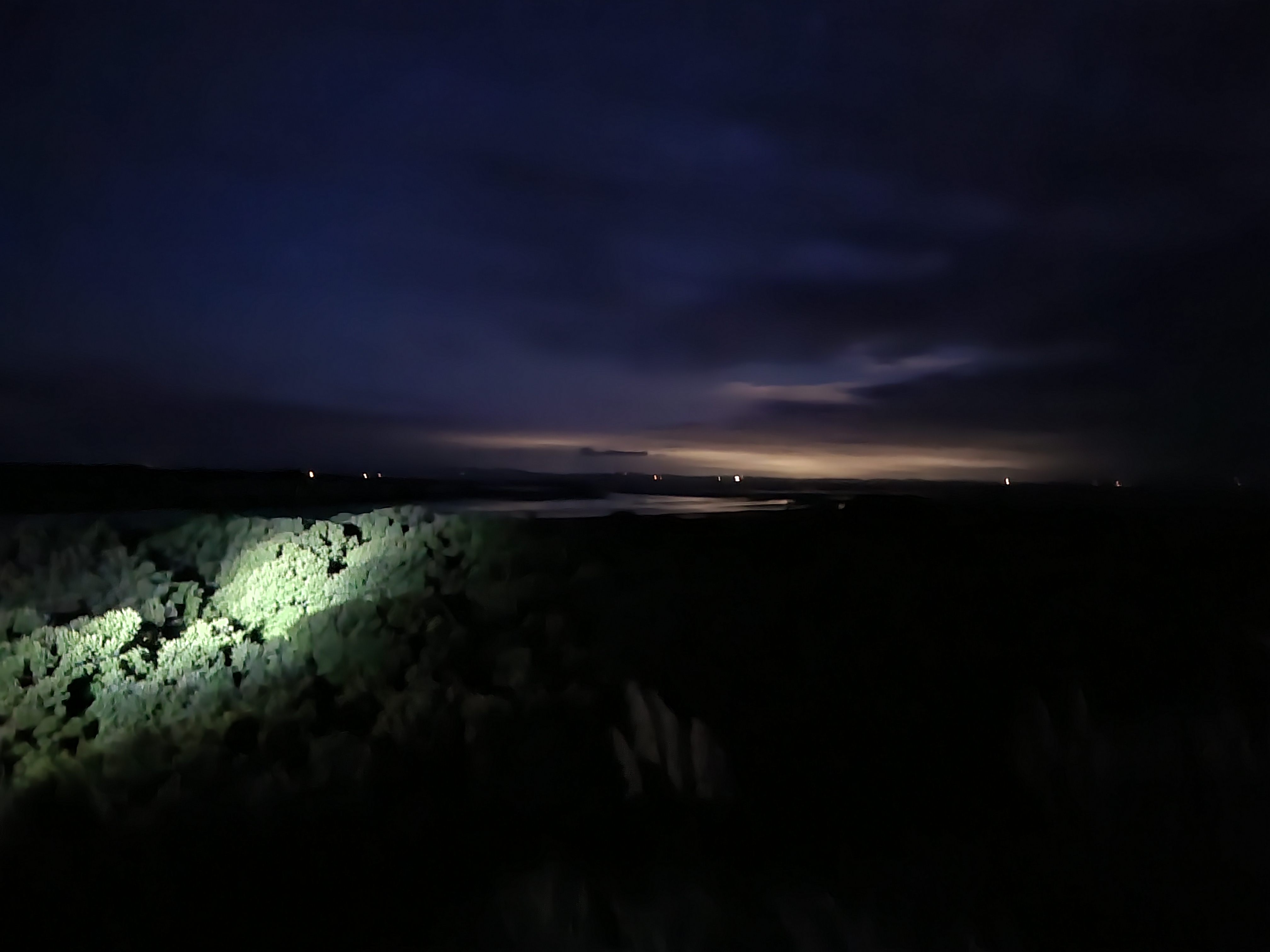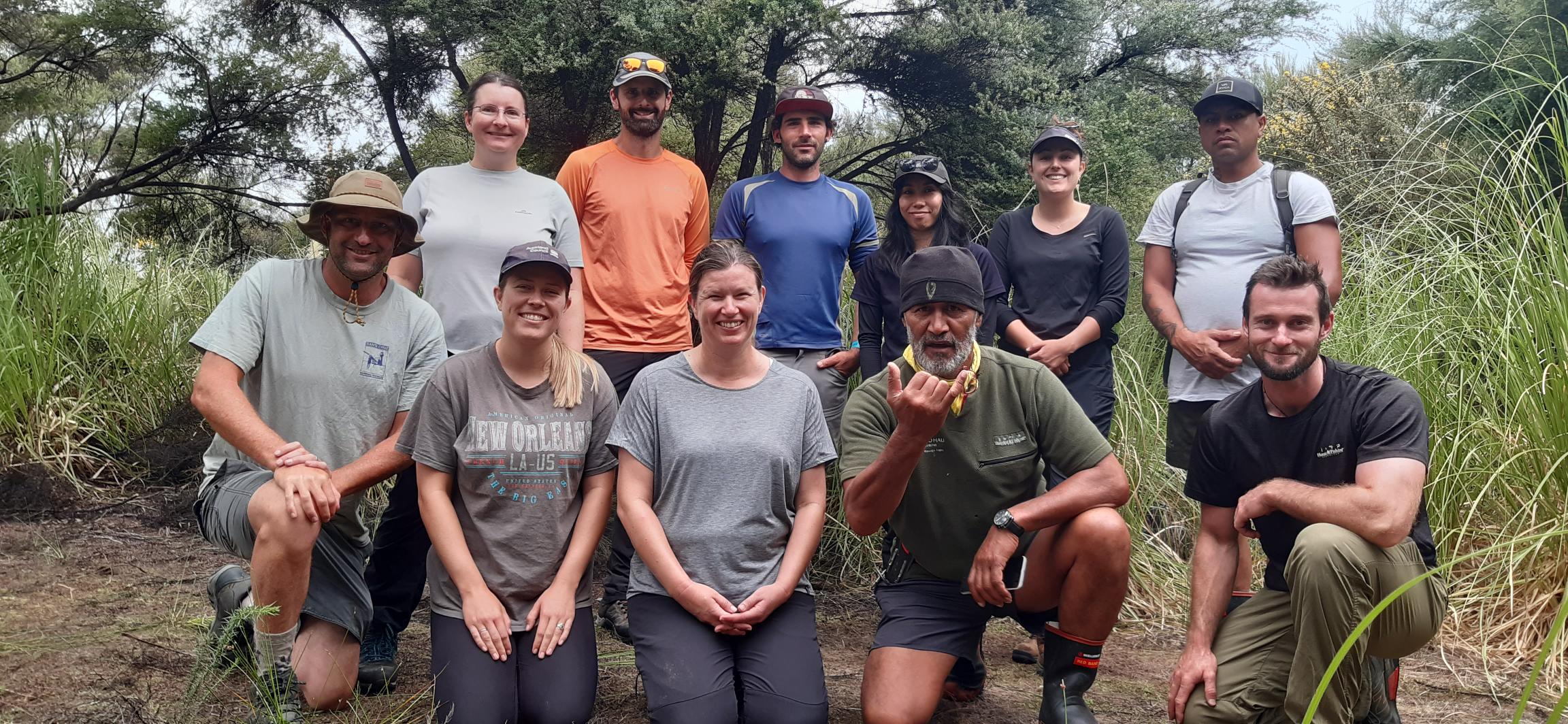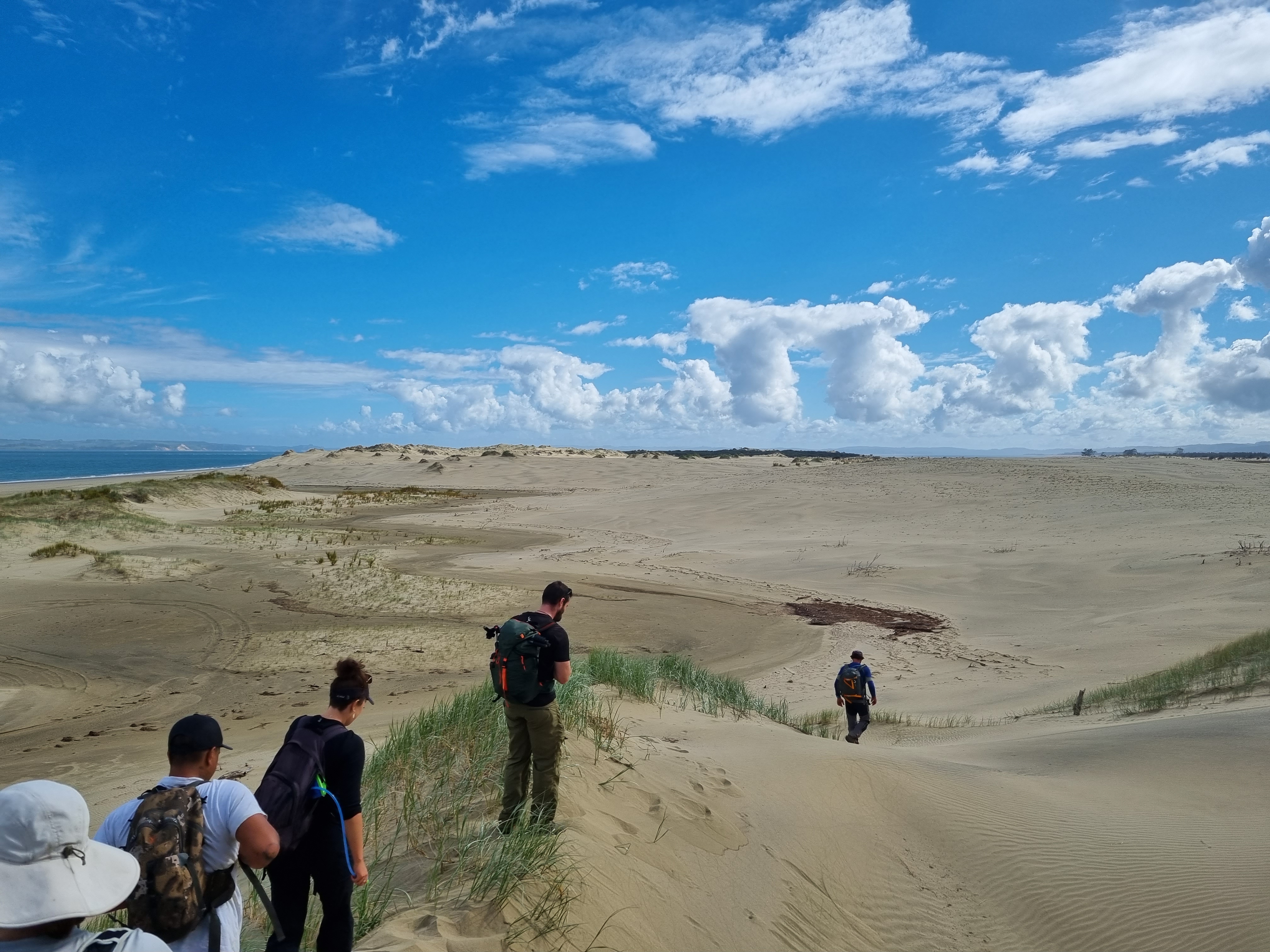Okahukura Peninsula in the north of Auckland was the site of a special camping trip recently, with Auckland Council staff setting up overnight to search for native reptiles including the rare Muriwai gecko and native skinks, with local iwi Te Uri o Hau guiding them along the way.
It was a trip with some successful surveillance results too, with a small population of Tātahi skink spotted during daytime habitat searching of vegetation on the mainland and a nearby sand island. The team also searched at night, using spotlighting to try and spot the Muriwai gecko.

Evening search of the dune
“At night, we are searching for movement when you can see the shape of their body or sometimes you can see the reflection of their eyes,” says Millie Ahlstrom, Ecology Specialist from Auckland Council’s Environmental Services department.
The surveillance was part of an effort to find more populations of the rare species, to support the existing one at nearby Muriwai, and to understand more about the sites, and the pressures and threats, such as predators. Unfortunately, the rare Muriwai gecko wasn’t found on this visit.
“We've been on the hunt for another population of Muriwai gecko because having only one site where you're doing the management is high risk,” says Melinda Rixon, Senior Ecologist at Auckland Council
“We're really hoping we can find another population, and create another species BFA (Biodiversity Focus Area) for Muriwai gecko and hopefully Tātahi skink at the same time, as a BFA allows us to target our biodiversity management resources to an area.”
As well as the skink discovery, the Okahukura trip was also a success in terms of partnership with mana whenua, with several kaitiaki from local iwi Te Uri o Hau, Gavin Kemp and Henry Nathan, accompanying the ecologists, guiding them to the two camping sites, sharing their invaluable knowledge of the area and getting practical experience in the field, alongside the ecologists.

Tapora reptile research team
Earle Wright of Te Uri o Hau, who is also chair of Tapora Landcare, led the health and safety briefing for the group of ecologists, and organised access to the land where he has grown up, supportive of the joint approach and the chance to share expertise and knowledge between mana whenua and council staff. Earle still lives on the Kaipara farm he grew up on and has been a big part of efforts to protect the environment within his rohe, including controlling pests on the Tapora peninsula to protect species like the fairy tern and reptiles, and working to improve the water quality of the Kaipara Harbour – a place where his whānau and tīpuna have gathered kai for their families for generations.
“The council ecologists have their expertise, and we have a Māori world view of things; when you bring those two together, that’s where you get the benefits, and see co-governance. When you work together you flourish and my job is to try and make our community flourish. Anybody that can bring anything to us to help us do that, we’re very much into that. It’s all about restoring life for us and we know the wellness of people is connected to the wellness of our environment,” says Earle.

Melinda says while they didn’t find as many lizards as they’d have liked, the Okahukura trip did give them a chance to do a general survey of the landscape in the area, recording presence of any insects, reptiles and plants to share the knowledge with the iwi, which they do via monthly updates from Millie Ahlstrom.
“The iwi were very supportive and enthusiastic. They gave us the lay of the land and how things would just roll out across the three days, and a really good health and safety briefing, which was particularly important as we were working at night,” says Melinda.
“With our current survey work, we engage with mana whenua on a project-by-project, place-by-place basis, and benefit greatly from their knowledge.”
Both the Muriwai gecko and Tātahi skink are also under surveillance at nearby Five Mile Strip in the Muriwai Regional Park, with the support of local iwi Ngā Maunga Whakahii o Kaipara. Here, artificial cover objects (ACOs) are being used in three different grids along the strip, and have been in place for five years. Advice from an expert statistician has advised that five more years is needed to give us a full trend of what's happening with that population.”
“We are also putting in some time and resource into trialling some relatively novel tools to see if we can increase our probability of detection,” says Melinda.
Both the Muriwai gecko and Tātahi skink are coastal species. The gecko lives in coastal dune habitat with dense vegetation, while the skink ventures further out, including to boulder beaches. The gecko is one of our most threatened reptiles, and the skink is also declining on the mainland, with the main threats to both lizards being predators like cats, mustelids, rodents and hedgehogs, as well as encroachment into the dune systems from wilding pines, and human disturbance, including from four-wheel drives.
Herpetologist Dylan van Winkel from Bioresearches is the lead contractor at both sites and is preparing a formal report on the Okahukura surveillance, with recommendations for the site to be provided to council and shared with mana whenua in June. Knowledge will also be shared with Auckland Zoo, which has been doing field surveys into native reptiles within and outside of the Auckland region, and has been working alongside Auckland Council during the survey and monitoring of Tātahi skink and Muriwai gecko.







